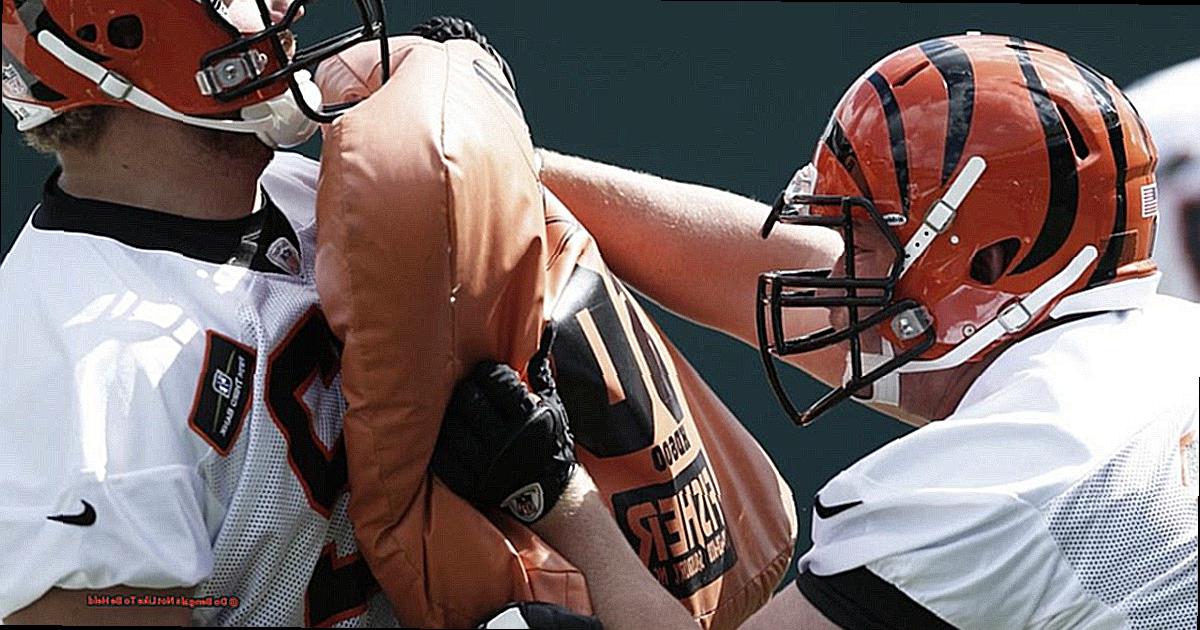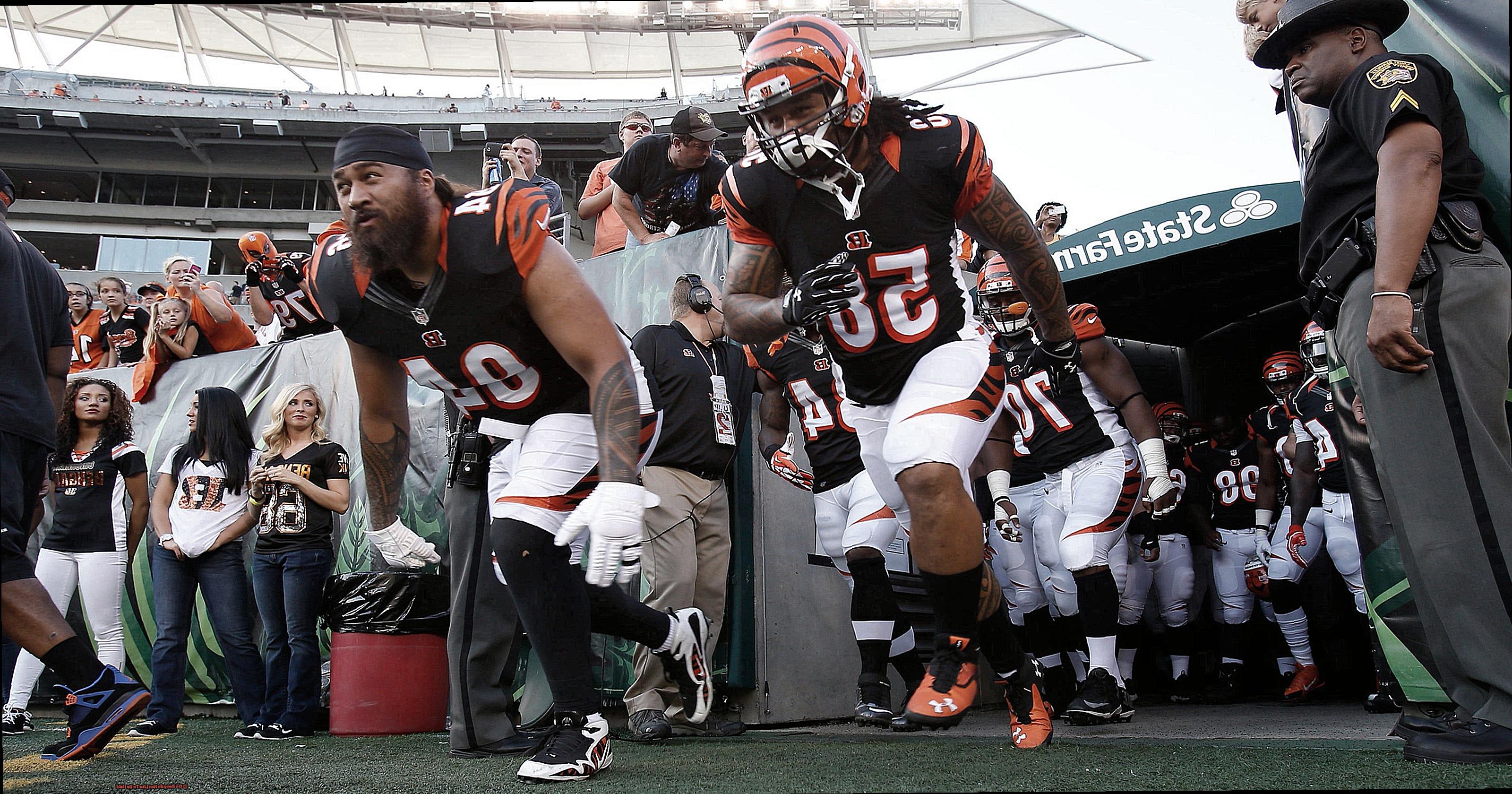Bengals, those captivating feline companions, are a breed that never fails to turn heads with their stunning appearance, sharp minds, and insatiable curiosity. If you’re considering adopting one of these majestic creatures or if you’re already lucky enough to have one by your side, you’ve probably heard the debate about whether Bengals truly dislike being held. Are they secretly plotting an escape every time we try to scoop them up? In this blog post, we’re diving headfirst into this intriguing question and shedding light on the complex relationship between Bengals and human touch.
Now, let’s get acquainted with Bengals for those who aren’t yet familiar. These cats are the result of some wild breeding magic between Asian leopard cats and domestic cats. The outcome? A breed that’s brimming with athleticism, independence, and an undeniable touch of panache. But as with any fusion of genes, there are bound to be some unique behavioral quirks that set them apart from their domestic cousins. And it’s precisely these quirks that hold the key to understanding their affinity (or lack thereof) for cuddling.
Here’s the deal: while it may be true that some Bengals prefer to keep their distance and maintain their independence, it’s far too simplistic to say that all Bengals despise being held. These intelligent beings thrive on mental stimulation and each has their own individual response when it comes to human touch. So in this blog post, we’re going deep into the reasons behind these mixed attitudes towards cuddles and arming you with valuable insights so you can better understand and accommodate your Bengal’s unique personality.
Ready to join us on this captivating journey? We’ll be debunking myths left and right, analyzing behavioral patterns like Sherlock Holmes on a case, and dishing out advice on how to foster a deep bond with your Bengal companion. Whether you’re a proud Bengal parent or just plain fascinated by these captivating creatures, this blog post will leave you with a treasure trove of knowledge about their preferences for physical affection.
So, let’s peel back the layers and demystify the age-old question: do Bengals not like to be held? Get ready for some eye-opening revelations.
Do Bengals not like to be held
Bengal cats are known for their distinct and beautiful appearance, as well as their active and playful nature. As a Bengal cat owner, you may have noticed that your feline friend has certain preferences when it comes to being held. In this article, we will explore the reasons why some Bengals may not enjoy being held, while others may find it comforting and enjoyable.
Understanding your Bengal’s individual needs and preferences is crucial for fostering a strong bond and ensuring their overall well-being.
Bengals are Independent and Energetic:
Bengal cats are highly energetic and independent creatures. They love to explore their surroundings and engage in various activities. This natural inclination towards independence may make some Bengals less inclined to sit still and be held for long periods of time. They prefer to be on the move, investigating their environment, and engaging in interactive play.
Restraining them in your arms may feel confining and restrict their freedom of movement, causing them to become restless or agitated.
Temperament and Socialization:
Just like humans, each Bengal cat has its own unique personality. While some Bengals may not enjoy being held due to their independent nature, others may actually appreciate the affection and closeness that comes with being held by their owners.
Early socialization is key in shaping a Bengal cat’s comfort with being handled and held. Properly socialized Bengal kittens introduced to gentle handling from a young age are more likely to grow up comfortable with being held.

Respecting Boundaries:
It’s essential to read your Bengal cat’s body language and signals to determine if they are comfortable with being held or if they need some personal space. If your Bengal consistently shows signs of discomfort or distress when being held, it’s crucial to respect their boundaries. Forcing them into situations they dislike can erode trust and strain your relationship. Instead, find alternative ways to bond with your Bengal, such as engaging in interactive play sessions or providing stimulating toys.
Building Trust:
Building trust with your Bengal cat is vital. Approach them calmly and use gentle touch when handling them. Allow them to adjust to being held gradually, starting with short periods and gradually increasing the duration. This approach can help build trust and make the experience more enjoyable for both you and your feline companion.
What Makes a Bengal Cat Unique?
Bengal cats are a breed like no other. They possess a captivating combination of physical traits, behaviors, and personality quirks that make them truly one-of-a-kind. As an expert in all things feline, I’m here to spill the beans on what sets Bengal cats apart from the rest. So buckle up, cat lovers, and prepare to be amazed.
- Exquisite Appearance: Picture this – a sleek and muscular body covered in a luxurious coat that resembles that of their wild ancestor, the Asian leopard cat. Bengals come in various colors and patterns, but it’s their striking spots and marbled coats that truly steal the show. And if that isn’t enough to make heads turn, some Bengals even have a glittering coat that sparkles in the sunlight. Talk about being the center of attention.
- Athletic Prowess: Bengals are built for action. With their strong bodies and agile nature, they are natural-born athletes. They can leap to incredible heights, climb vertical spaces with ease, and pounce on their prey (or toys) with lightning speed. If you’re looking for a feline companion to keep up with your active lifestyle, look no further than a Bengal.
- Curiosity and Intelligence: Bengals aren’t just physically agile; they’re mentally sharp too. These cats have an insatiable curiosity that drives them to explore every nook and cranny of their surroundings. They enjoy puzzles, interactive toys, and games that challenge their minds. Keep them engaged, and they’ll reward you with their cleverness and problem-solving skills.
- Playful Personalities: Prepare yourself for endless entertainment when you bring a Bengal into your home. These cats have a mischievous streak a mile wide. They love playing fetch, chasing laser pointers, and engaging in interactive playtime. Their high energy levels mean they need plenty of exercise and mental stimulation to keep them happy and content.
- Social Butterflies: Bengals are social creatures who thrive on companionship. They form strong bonds with their human companions and enjoy being part of the family. They will follow you around the house, perch on your shoulder, and even join you in bed. If you’re seeking a cat that craves attention and interaction, a Bengal is the perfect match for you.
- Vocal Virtuosos: Bengals have an extensive repertoire of vocalizations that they aren’t afraid to use. From chirping and trilling to meowing and purring, they will let you know exactly what’s on their minds. Their expressive nature adds an extra layer of charm to their already captivating personalities.


Socialization and Trust Building with Bengals
Today, we’re delving into the fascinating world of socialization and trust building with our beloved Bengals. If you’ve ever wondered how to create a strong bond with your Bengal and make them feel more comfortable in your arms, you’ve come to the right place. Let’s dig in.
Socialization: Shaping Behavior and Confidence
- Start early: Introduce your Bengal to various people, environments, and situations from a young age.
- Positive reinforcement training: Reward your Bengal with treats, praise, or playtime when they respond well to being held or touched.
- Gradual exposure: Begin with gentle petting while they’re relaxed, gradually increasing interaction duration as their comfort level grows.
Building Trust: The Key to a Deep Connection
- Respect boundaries: Avoid forcing or restraining your Bengal against their will. Allow them to approach you on their terms.
- Positive associations: Offer treats or playtime immediately after holding your Bengal, creating a pleasant experience for them.
- Safe retreats: Provide a cozy space where your Bengal can retreat if they feel overwhelmed during socialization sessions.
Enriched Environment: Stimulating Their Senses
- Toys, toys, toys: Keep your Bengal mentally and physically engaged with plenty of toys they can pounce on and play with.
- Scratching posts and climbing structures: Encourage positive behaviors while diverting their attention during holding sessions.
Remember, each Bengal has their own unique personality and preferences. Respect their individuality and never force them into uncomfortable situations. With patience, understanding, and consistent positive experiences, you’ll forge an unbreakable bond with your Bengal companion.
How to Tell if Your Bengal is Comfortable Being Held
Bengal cats are known for their striking appearance and energetic nature. But do they enjoy being held? While every Bengal has its own unique personality and preferences, it’s essential to understand their comfort levels when it comes to cuddling. In this article, we’ll explore how to tell if your Bengal is comfortable being held, so you can ensure a positive and enjoyable experience for both you and your feline friend.
Body Language Speaks Volumes:
Observing your Bengal’s body language is key to understanding their comfort level. A relaxed and loose body posture suggests they’re at ease being held. Conversely, if they’re tensed up, trying to escape, or displaying signs of aggression like hissing or growling, it’s clear they’d prefer not to be held.
Tail Talk:
The position of your Bengal’s tail can provide valuable insight. A relaxed tail hanging down naturally indicates comfort, while a stiff or tucked tail suggests anxiety or discomfort.
Facial Expressions:
Take a close look at your Bengal’s face. Soft eyes, neutral ears, and a relaxed expression indicate contentment. However, flattened ears, dilated eyes, or a tense expression are signs of discomfort or distress.
Vocal Clues:
Cats communicate through vocalizations, and your Bengal’s meows can reveal their comfort level. Purring generally indicates enjoyment, while growling, hissing, or distressed vocalizations mean it’s best to put them down.
Duration Matters:
Some Bengals may tolerate being held for short periods but become restless or agitated if held for too long. Respect their boundaries and gauge their comfort level by keeping cuddle sessions brief and enjoyable.
Gradual Acclimation:
If your Bengal isn’t initially comfortable with being held, gradually acclimate them to the experience. Start with gentle petting and progress to lifting them for short periods, rewarding them with treats and praise to create positive associations.
Signs of Discomfort When Being Held
Bengal cats are known for their stunning coat patterns and playful personalities. However, not all Bengals enjoy being held. As a responsible cat owner, it’s essential to understand the signs of discomfort when holding your Bengal. In this guide, we will explore the various indicators that your Bengal may not be enjoying being held and provide tips on how to create a positive bonding experience with your feline friend.
Body Language:
When you pick up your Bengal, pay close attention to their body language. If they become stiff or tense, it’s a clear sign of discomfort. Additionally, flattened ears, lashing tail, and dilated pupils indicate that your cat is not enjoying the experience. Respect their signals and allow them to move freely if they show these signs.
Vocalizations:
Bengals express their displeasure through vocalizations. If your cat meows loudly, growls, or hisses when being held, it’s their way of communicating that they want to be let go. Responding to their vocal cues will ensure a better relationship based on trust and understanding.
Attempts to Escape:
Bengals are agile creatures and may try to escape when they feel uncomfortable being held. They may use their sharp claws to scratch or climb out of your arms. It’s vital to respect their boundaries and let them go if they show signs of wanting to escape.
Aggression:
Aggressive behavior is often a result of extreme discomfort or fear in Bengals. They may bite, scratch, or lunge at the person holding them as a defensive response. Understand that this aggression stems from their discomfort and release them immediately to prevent any injuries.
Licking or Grooming:
Although less common, some Bengals resort to excessive licking or grooming when held against their will. This behavior serves as a self-soothing mechanism and reflects their desire to redirect anxiety or stress. If you notice your Bengal excessively grooming itself while being held, it’s a sign that they would prefer to be released.
Alternative Ways to Bond with Your Bengal
Bengal cats are known for their independent and active nature, which can make them less inclined to enjoy being held compared to other cat breeds. However, every Bengal cat is unique, and while some may not enjoy being held, others may actually appreciate the closeness and affection that comes with it. Instead of focusing solely on holding your Bengal, there are alternative ways to bond with them that they may enjoy more. In this article, we will explore some engaging and interactive ways to build a strong bond with your Bengal.
Interactive Play:
Bengals are highly energetic cats, and engaging them in play sessions can help build a strong bond between you and your feline friend. Use toys that stimulate their hunting instincts, such as feather wands or interactive puzzle toys. This not only keeps them mentally and physically stimulated but also provides an opportunity for quality bonding time. Get down on their level and let the games begin. By actively participating in their playtime, you show them that you’re their trusted playmate.
Grooming Sessions:
Contrary to popular belief, many Bengals actually appreciate the attention and care that grooming provides. Regular brushing sessions can help keep their coat healthy and shiny while also allowing you to spend time together in a relaxed and soothing environment. Use this time to bond by talking softly to your Bengal and giving them gentle strokes. It’s a win-win situation.
Water Play:
Bengals are notorious for their love of water. Incorporating water play into your bonding routine can be a fun and unique experience for both of you. Provide a shallow pool or fountain for them to splash in, or simply let the water run in the sink while they watch or playfully paw at it. This not only helps them stay hydrated but also allows for interactive and exciting playtime.
Creating a Stimulating Environment:
Bengals are intelligent cats that thrive on mental stimulation and exploration. Provide them with plenty of toys, scratching posts, and climbing structures to keep them entertained and engaged. Interactive puzzle toys or treat-dispensing toys can also provide mental stimulation while rewarding their curiosity and problem-solving skills. By offering a stimulating environment, you are giving your Bengal the opportunity to explore and engage, fostering a deeper connection with them.
Quality Time Together:
Spending dedicated time with your Bengal is crucial for building a strong bond. Set aside a specific time each day to interact with your cat. Whether it’s gentle petting, talking to them, or simply sitting nearby while they play or relax, giving them your undivided attention shows them that they are valued and loved members of your family. Remember, it’s the quality, not the quantity of time that matters most.
Respect Your Bengal’s Boundaries
You’ve brought home your new Bengal cat, and you’re excited to shower them with love and affection. But hold on a minute. Bengals are known for their independent and active nature, which means they may not be as keen on being held or cuddled as some other breeds. It’s important to understand and respect your Bengal’s boundaries when it comes to physical contact. Let me tell you why.
Independence is their middle name
Bengals are naturally independent creatures. They enjoy their personal space and may prefer to be near you rather than being held in your arms. It’s like having a roommate who likes to hang out in the same room but doesn’t want to cuddle on the couch all the time. So, allow your Bengal to sit or lay beside you instead of insisting on picking them up.
Watch their body language
Just like humans, cats have their own ways of communicating. Pay attention to your Bengal’s body language and signals when it comes to physical contact. If they start twitching their tail or flattening their ears, it’s a sign that they may not be comfortable with the current situation. Respect their boundaries and give them space.
No means no
Forcing physical contact on a Bengal when they’re showing signs of stress or discomfort can lead to a breakdown in trust and strain your relationship. Remember, consent matters even in the feline world. If your Bengal doesn’t want to be held or cuddled at a particular moment, let them be. Respect their “no” and find alternative ways to show affection.
Explore alternative forms of affection
Physical contact is not the only way to bond with your Bengal. Interactive play sessions, grooming sessions, and providing a stimulating environment can all help strengthen your bond without compromising your cat’s boundaries. Find activities that your Bengal enjoys and make them a regular part of your routine.
Every Bengal is unique
Just like humans, each Bengal cat has their own preferences and comfort levels when it comes to physical contact. Spend time observing and understanding your individual cat’s likes and dislikes. This will help you tailor your approach and ensure that you’re respecting their boundaries while still creating a loving connection.
Tips for Handling and Holding Bengals
Bengals are a unique breed known for their independent nature and high energy levels. While some Bengals may not enjoy being held, others may actually enjoy the closeness and affection that comes with being held by their owners. Here are some tips for handling and holding Bengals to ensure a positive experience for both you and your feline friend.
Respect their boundaries
Bengals are known for their active and playful nature, so it’s important to approach them with patience and respect. Forcefully restraining or grabbing a Bengal can cause them to feel threatened or anxious, leading to negative associations with being held. Instead, gradually introduce your Bengal to being held by starting with short periods of gentle handling and gradually increasing the duration over time. This helps them build trust and become more comfortable with being held.
Pay attention to body language
It’s important to pay attention to your Bengal’s body language while holding them. If they show signs of distress or discomfort, such as growling, hissing, or trying to escape, it is best to give them space and try again later. Respecting their boundaries and allowing them to come to you on their terms will help build trust and create a positive association with being held.
Provide positive reinforcement
Providing positive reinforcement during and after holding sessions can also help create a positive association with being held. Offering treats or praise when they tolerate being held can encourage them to view it as a positive experience.
Support their body properly
When holding a Bengal, it is important to handle them with care and support their body properly. Supporting their hindquarters while holding them prevents unnecessary strain on their back and reduces the chances of injury.
Respect their preferences
Some Bengals may prefer alternative forms of physical contact, such as sitting next to their owners or engaging in interactive play sessions. Pay attention to your Bengal’s preferences and respect their boundaries. Every cat is unique, and it’s important to find ways to bond and interact with your Bengal that they feel comfortable with.
Benefits of Holding Your Bengal Cat
Today, we’re going to talk about the incredible benefits of holding your Bengal cat. As a proud Bengal cat owner myself, I can personally vouch for the magic that happens when you scoop up your furry friend and give them a loving embrace. Let’s dive in and explore why holding your Bengal cat is so pawsome.
Strengthening the Bond
When you hold your Bengal cat, you’re not just cradling their adorable little body; you’re also strengthening the bond between you two. Research has shown that physical contact, like holding and cuddling, releases oxytocin in both humans and animals. Oxytocin is known as the “bonding hormone” and promotes feelings of trust, love, and attachment. So, get ready for an even deeper connection with your Bengal buddy.
Providing Security and Comfort
Just like all cats, Bengals have a natural instinct for seeking out cozy and safe spaces. When you hold your Bengal cat, you’re giving them a warm and secure environment. This can be especially beneficial for Bengals that may feel anxious or stressed. The physical contact helps them feel calm and reassured, turning your cuddle sessions into moments of pure bliss.
Monitoring Health and Well-being
Holding your Bengal cat gives you the opportunity to keep a close eye on their health and well-being. You can check for any physical abnormalities, such as lumps or injuries. Plus, by observing their behavior during cuddle time, you can quickly detect any changes in appetite, energy levels, or litter box habits. Early detection of potential health issues means timely veterinary care and peace of mind for both you and your furry friend.
Socialization Superpowers
Bengals are known for their high intelligence and sociability. By regularly holding your Bengal cat from a young age, you’re exposing them to positive human interaction. This helps them become more confident and at ease when meeting new people or encountering different situations. Plus, it increases the likelihood of them being comfortable with being held by other family members or visitors. Talk about a social butterfly.
Mental Stimulation and Enrichment
Bengals are highly active and intelligent cats that thrive on mental stimulation. When you hold your Bengal cat, you can engage in gentle play or interactive activities that keep their minds engaged. Whether it’s using toys, teaching tricks, or simply having a calming conversation, these moments of mental stimulation prevent boredom-related behavior issues in Bengals. It’s a win-win for both of you.
Also Read: Are Cats Allergic To The Smell Of Eucalyptus
Conclusion
In conclusion, it is important to understand that Bengals, like any other cat breed, have their own unique personalities and preferences.
While some Bengals may not enjoy being held, it does not mean that all Bengals dislike this form of affection. It is crucial to approach each Bengal as an individual and respect their boundaries.
Remember, every cat is different, and it’s essential to listen to their cues and provide the love and attention they need in a way that suits their individual needs.







